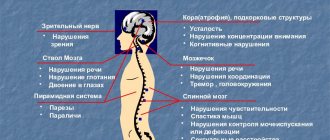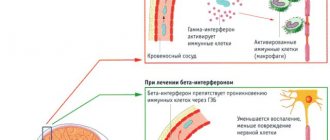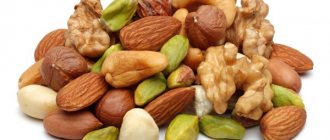Authorized Products
- Fish (salmon, pangasius, talapia, halibut, mackerel, herring, trout), squid baked with vegetables.
- You can add seaweed to your dishes. You can include a boiled seafood cocktail (mussels, octopus, shrimp) with olive oil and salad in your diet. Unsalted canned fish and preserves are allowed. Cod liver can be eaten with rice or cornbread.
- Limiting fats (including lard, margarine, etc.). Of the vegetable oils, olive and flaxseed are preferable, which are added to dishes.
- Chicken and turkey - dark meat is rarely allowed, preference is given to white meat. Chicken breast can be boiled, stewed or baked in foil with vegetables.
- Lean meat (pork, beef, lamb, rabbit, veal) is allowed in the diet 1-2 times a week. You can make cutlets, cabbage rolls and meatballs with the addition of rice, but without eggs. When consuming saturated fats that come from meat, you need to drink fish oil.
- It is rarely allowed to eat stewed beef liver.
- Vegetables and fruits are not limited (except for potatoes, which can rarely be consumed boiled or stewed, with mushrooms). You can add boiled chicken, beef or seafood to vegetable salads. You can cook stewed vegetables, vegetable stew and mushrooms.
- Porridges (rice, millet, corn, buckwheat) are prepared in water, and olive oil is added to the finished ones. You should choose brown rice varieties. Pasta is made only from rice flour.
- You can prepare baked goods and various products from corn and rice flour. Only corn muesli.
- Unlimited fruits, dried fruits (dates, figs, dried apricots, raisins, prunes, peaches, apples).
- Any nuts except peanuts.
- Honey and dark chocolate are allowed in limited quantities. Instead of sugar, use stevia or maple syrup to a limited extent.
- Sea fish, hazelnuts and cashews help replace calcium in the diet. Mustard.
- Alcohol - dry red wine.
- Natural juices, green tea with honey, table water, herbal infusions (rose hips, licorice root, St. John's wort, chamomile, sage, birch buds).
Table of permitted products
| Proteins, g | Fats, g | Carbohydrates, g | Calories, kcal | |
Vegetables and greens | ||||
| greenery | 2,6 | 0,4 | 5,2 | 36 |
| eggplant | 1,2 | 0,1 | 4,5 | 24 |
| zucchini | 0,6 | 0,3 | 4,6 | 24 |
| cabbage | 1,8 | 0,1 | 4,7 | 27 |
| broccoli | 3,0 | 0,4 | 5,2 | 28 |
| boiled cauliflower | 1,8 | 0,3 | 4,0 | 29 |
| bulb onions | 1,4 | 0,0 | 10,4 | 41 |
| carrot | 1,3 | 0,1 | 6,9 | 32 |
| cucumbers | 0,8 | 0,1 | 2,8 | 15 |
| salad pepper | 1,3 | 0,0 | 5,3 | 27 |
| radish | 1,2 | 0,1 | 3,4 | 19 |
| white radish | 1,4 | 0,0 | 4,1 | 21 |
| red radish | 1,2 | 0,1 | 3,4 | 20 |
| black radish | 1,9 | 0,2 | 6,7 | 35 |
| salad | 1,2 | 0,3 | 1,3 | 12 |
| beet | 1,5 | 0,1 | 8,8 | 40 |
| celery | 0,9 | 0,1 | 2,1 | 12 |
| asparagus | 1,9 | 0,1 | 3,1 | 20 |
| tomatoes | 0,6 | 0,2 | 4,2 | 20 |
| Jerusalem artichoke | 2,1 | 0,1 | 12,8 | 61 |
| pumpkin | 1,3 | 0,3 | 7,7 | 28 |
| garlic | 6,5 | 0,5 | 29,9 | 143 |
| spinach | 2,9 | 0,3 | 2,0 | 22 |
| sorrel | 1,5 | 0,3 | 2,9 | 19 |
Fruits | ||||
| avocado | 2,0 | 20,0 | 7,4 | 208 |
| oranges | 0,9 | 0,2 | 8,1 | 36 |
| bananas | 1,5 | 0,2 | 21,8 | 95 |
| pomegranate | 0,9 | 0,0 | 13,9 | 52 |
| grapefruit | 0,7 | 0,2 | 6,5 | 29 |
| pears | 0,4 | 0,3 | 10,9 | 42 |
| kiwi | 1,0 | 0,6 | 10,3 | 48 |
| lemons | 0,9 | 0,1 | 3,0 | 16 |
| mango | 0,5 | 0,3 | 11,5 | 67 |
| tangerines | 0,8 | 0,2 | 7,5 | 33 |
| nectarine | 0,9 | 0,2 | 11,8 | 48 |
| peaches | 0,9 | 0,1 | 11,3 | 46 |
| apples | 0,4 | 0,4 | 9,8 | 47 |
Berries | ||||
| grape | 0,6 | 0,2 | 16,8 | 65 |
| gooseberry | 0,7 | 0,2 | 12,0 | 43 |
| Red currants | 0,6 | 0,2 | 7,7 | 43 |
| black currant | 1,0 | 0,4 | 7,3 | 44 |
Mushrooms | ||||
| mushrooms | 3,5 | 2,0 | 2,5 | 30 |
Nuts and dried fruits | ||||
| nuts | 15,0 | 40,0 | 20,0 | 500 |
| raisin | 2,9 | 0,6 | 66,0 | 264 |
| cashew | 25,7 | 54,1 | 13,2 | 643 |
| sesame | 19,4 | 48,7 | 12,2 | 565 |
| flax seeds | 18,3 | 42,2 | 28,9 | 534 |
| fenugreek seeds | 23,0 | 6,4 | 58,3 | 323 |
Cereals and porridges | ||||
| buckwheat (kernel) | 12,6 | 3,3 | 62,1 | 313 |
| corn grits | 8,3 | 1,2 | 75,0 | 337 |
| millet cereal | 11,5 | 3,3 | 69,3 | 348 |
| rice | 6,7 | 0,7 | 78,9 | 344 |
Raw materials and seasonings | ||||
| honey | 0,8 | 0,0 | 81,5 | 329 |
Meat products | ||||
| pork liver | 18,8 | 3,6 | 0,0 | 108 |
| beef | 18,9 | 19,4 | 0,0 | 187 |
| beef liver | 17,4 | 3,1 | 0,0 | 98 |
| rabbit | 21,0 | 8,0 | 0,0 | 156 |
Bird | ||||
| chicken fillet | 23,1 | 1,2 | 0,0 | 110 |
| turkey | 19,2 | 0,7 | 0,0 | 84 |
Fish and seafood | ||||
| Red caviar | 32,0 | 15,0 | 0,0 | 263 |
| black caviar | 28,0 | 9,7 | 0,0 | 203 |
| squid | 21,2 | 2,8 | 2,0 | 122 |
| mussels | 9,1 | 1,5 | 0,0 | 50 |
| seaweed | 0,8 | 5,1 | 0,0 | 49 |
| canned fish | 17,5 | 2,0 | 0,0 | 88 |
| cod (liver in oil) | 4,2 | 65,7 | 1,2 | 613 |
Oils and fats | ||||
| linseed oil | 0,0 | 99,8 | 0,0 | 898 |
| olive oil | 0,0 | 99,8 | 0,0 | 898 |
Non-alcoholic drinks | ||||
| mineral water | 0,0 | 0,0 | 0,0 | — |
| green tea | 0,0 | 0,0 | 0,0 | — |
| * data is per 100 g of product | ||||
Menu for every day
According to the recommendations of Dr. Roy Swank, who since the late 50s for many decades has been involved in the selection of proper therapeutic nutrition for patients, it is necessary first of all to exclude allergenic foods from the diet.
The patient’s daily menu should include no more than 15 g of saturated fats, and 20-50 g of unsaturated fats. You can safely include dairy products with a fat content of 1% in the diet during the treatment period.
Embry diet breakfast example:
- porridge from whole grains (barley, oatmeal, rolled oats, corn) with water or dairy products 1%;
- fruit salad rich in ascorbic acid (kiwi, apples, bananas, citrus fruits, grapes);
- herbal or green Chinese tea.
Dinner:
- vegetable soup with fish, meat (chicken, turkey);
- vegetables, baked, steamed, boiled with chicken breast or turkey;
- coffee drink or chicory.
Afternoon snack:
- baked apple, pear with walnuts and honey;
- compote, fruit drink, jelly.
Dinner:
- vegetable salad with grated cheese, eggplant and zucchini;
- lean fish with lettuce and lemon juice;
- drink (tea, fruit drink, compote).
Course of the disease and nutrition
The issue of proper nutrition during the treatment of multiple sclerosis requires special attention. Official medicine has been studying this disease for a long time and has discovered a close relationship between how the patient eats and the course of the disease.
Attention! Researchers note that sclerosis is more likely to occur in people who consume large amounts of meat products. Meat, chicken egg yolks and butter contain arachidonic acid. It provokes inflammatory processes in the body.
And multiple sclerosis is nothing more than inflammation of the nerve roots. Therefore, we can safely say that nutrition plays an important role in the onset and progression of multiple sclerosis.
Vegetables and fruits do not contain these harmful substances. On the contrary, seafood and vegetable oils prevent inflammation. You should review what is on the table of a sick person. Increase the number of dishes that will benefit you.
The symptoms of the disease are described here; Find out what life expectancy is from the article.
What is multiple sclerosis?
Multiple sclerosis (MS) is an autoimmune disease in which the protective sheaths of nerve fibers are gradually destroyed.
These coverings are called myelin sheaths. Over time, this disease can permanently damage your nerves, disrupting communication between your brain and body ().
Here are the symptoms of multiple sclerosis ():
- fatigue
- tingling and numbness
- bladder and bowel dysfunction
- difficulty moving and spasticity
- visual impairment
- problems with learning and memory
MS is very complex, and the disease's progression varies from person to person. Scientists are still not sure what causes multiple sclerosis and how to cure it ().
Although diet cannot cure multiple sclerosis, some research suggests that dietary changes may help people with multiple sclerosis better control their symptoms. This, in turn, can improve their quality of life (, ).
Conclusion:
Multiple sclerosis (MS) is a neurological disease that gradually destroys the protective sheaths called myelin sheaths that surround nerve fibers. Scientists do not fully understand the disease, and there is no cure.










